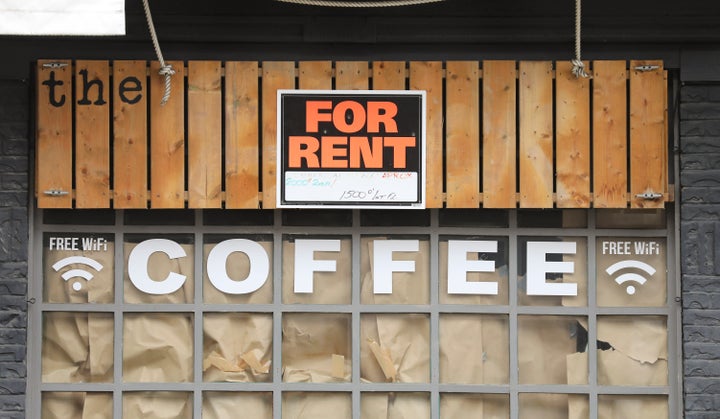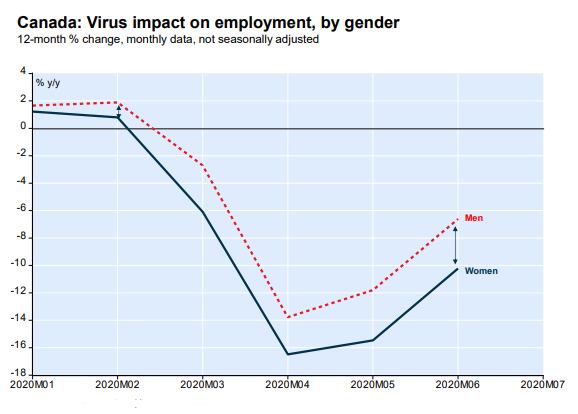
Over the past few months, a growing chorus of business owners and economists has been raising an alarm over the Canada Emergency Response Benefit (CERB), the $500-a-week temporary income supplement for those who lost their jobs in the pandemic.
The CERB is so generous, they say, that for many people it pays more to stay at home than to return to work. In a recent survey, the Canadian Federation of Independent Business (CFIB) found 27 per cent of its member businesses reported incidents of people declining to return to work when called up.
CERB was the most common reason, cited by 62 per cent of businesses.
Watch: Too much CERB, not enough CEWS: Businesses lament focus on income supports instead of wage supports. Story continues below.
“It is clear that CERB has created a disincentive to return to work for some staff, especially in industries like hospitality and personal services,” the head of the Canadian Federation of Independent Business, Dan Kelly, said in a report earlier this month.
“CERB was created as emergency support for workers who had lost their job due to the pandemic, not to fund a summer break. This is why it is critical that all parties support the government’s proposed change to end CERB benefits when an employer asks a worker to return to work.”
On the other side of the debate are experts and anti-poverty activists who argue that there are many reasons, beyond a “summer break,” why people don’t want to return to work amid the COVID-19 pandemic. And the data shows the program prevented ― or at least cushioned ― an economic crisis particularly among women and young people.
CERB pays better
In a report this week, economists at National Bank of Canada compared CERB income to wages in various industries. They found that in some industries, the CERB replaced more than 80 per cent of lost income for the average worker, and in one area ― accommodation and food services ― it actually topped up the average income by an extra 19 per cent.
“The resulting replacement rate… thus provides an incentive for employees to stay without a job for the duration of the program,” economists Alexandra Ducharme and Noah Nagle wrote.
But that incentive is particularly strong among part-time workers, for whom CERB is paying out more than the average wage in almost every industry in Canada, including government jobs in public administration and education.

Because of this, CERB “skews the unemployment numbers used to gauge the adverse effects of this particular recession,” the National Bank economists wrote ― meaning we are potentially seeing a higher jobless rate than we would have without CERB.
They called CERB a “blessing and a curse.”
CERB prevented disaster ― especially for Gen Z and women
But others argue that, whatever the flaws in its details, CERB prevented a full-scale economic disaster when millions of Canadians were thrown out of work at the beginning of the lockdowns.
“At the end of the day, CERB approximates the minimum wage in most provinces. I don’t think anyone’s trying to pretend that this group of workers are making out like bandits,” said Katherine Scott, a senior economist at the Canadian Centre for Policy Alternatives.
A lot of employees are staying away from work for good reason, Scott noted ― including concerns about infection, and the fact that parents ― particularly women ― have little choice but to stay home with their kids when schools are closed.
The CFIB’s survey showed that, of the businesses that saw workers decline work, 47 per cent said employees expressed health concerns about returning to work, while 27 per cent expressed concerns about raising children.

In their report, the National Bank economists note that far more women have been severed from their jobs than men in this crisis, with 6.6 per cent fewer jobs for men today than a year ago, and 10.2 per cent fewer jobs for women.
“In families where both parents cannot work from home, women are more likely to stay home because they earn less than men,” Ducharme and Nagle wrote.
And because young people tend to have jobs in fields that were hit hardest by the lockdowns ― retail and recreation, for example ― they too have been hit hard, the National Bank economists noted.
“The large share of Gen Z and women who were working part-time, with lower average weekly earnings, have an incentive to continue collecting CERB rather than return to work,” they wrote.
“People would go back to work if they were offered more than minimum wage.”
- Katherine Scott, senior economist, CCPA
This is why Scott and the CCPA are advocating for immediate expansion of child care spending, urging the government to inject $2.5 billion into early education and child care ― considerably more than the $625 million the federal government announced this week.
For Scott, the fact that CERB ― which in essence pays the equivalent of $26,000 a year ― is enough to keep people away from work is a sign these workers are undervalued in the economy.
“People would go back to work if they were offered more than minimum wage,” she said.
“I don’t think (CERB) is thwarting our economy,” Scott said. “If employers want workers they have to offer good working conditions, decent wages and we’re not there yet.”
Course change ahead
CERB runs for a maximum of 24 weeks per recipient, and the earliest recipients will be running out by October. Given the signals they have sent, it’s likely the federal Liberals will announce an overhaul of unemployment benefits by that time.
The Trudeau government announced earlier this month that it is extending the wage subsidy for businesses until December ― but announced no further extension to CERB. That’s a signal the feds want to shift focus to supporting businesses that hire, rather than people who have lost work.
Scott expects to see an overhaul of the Employment Insurance system, which she says “clearly wasn’t up to the task” when the wave of pandemic-related layoffs hit in March.
“I imagine in short order we will see a new EI program opened up, and we’ll hopefully see the transition to the wage subsidy program and that will do most of the heavy lifting,” she said.
“CERB wasn’t a perfect piece of public policy, (but) it was a necessary piece of policy.”